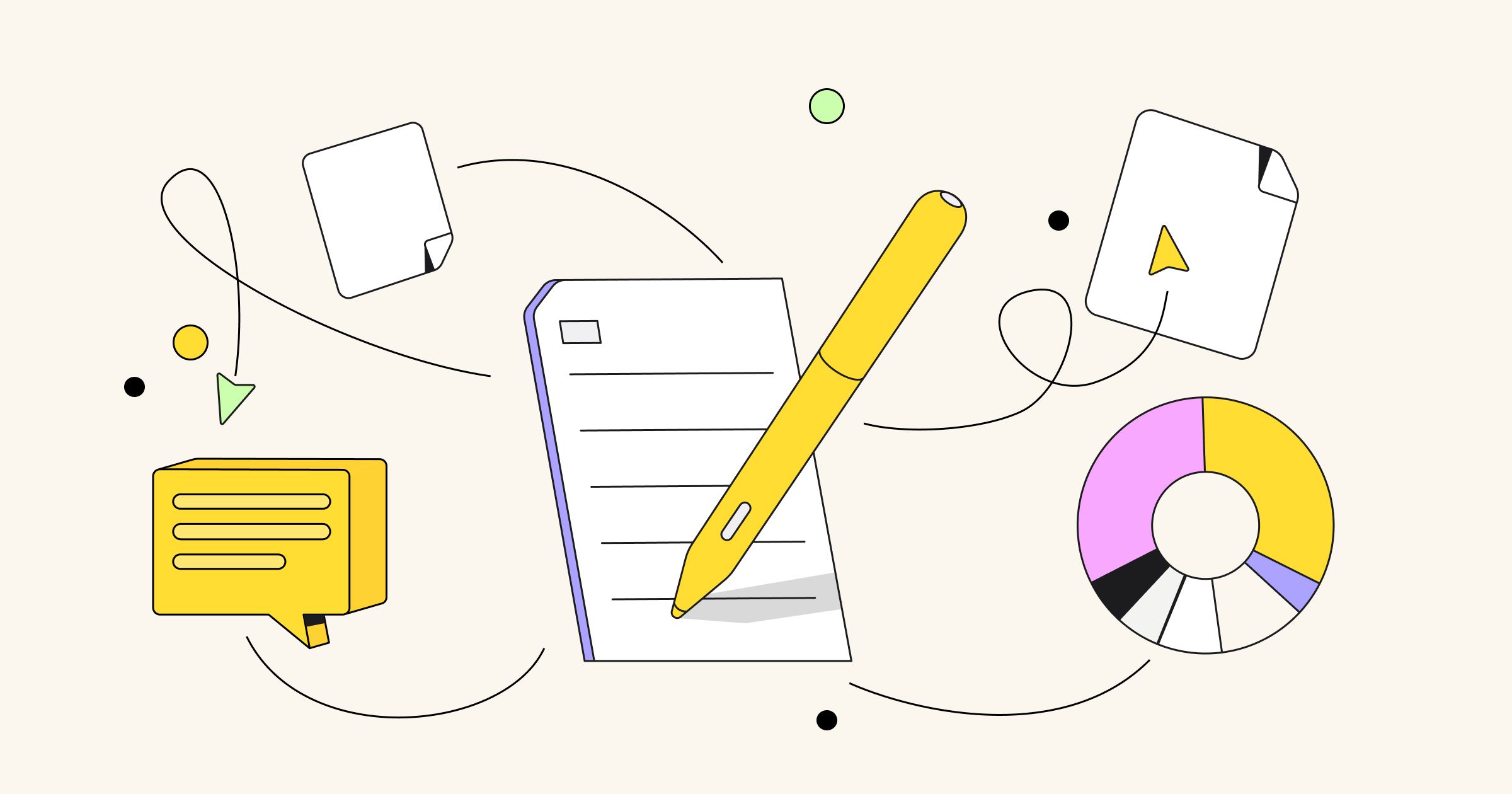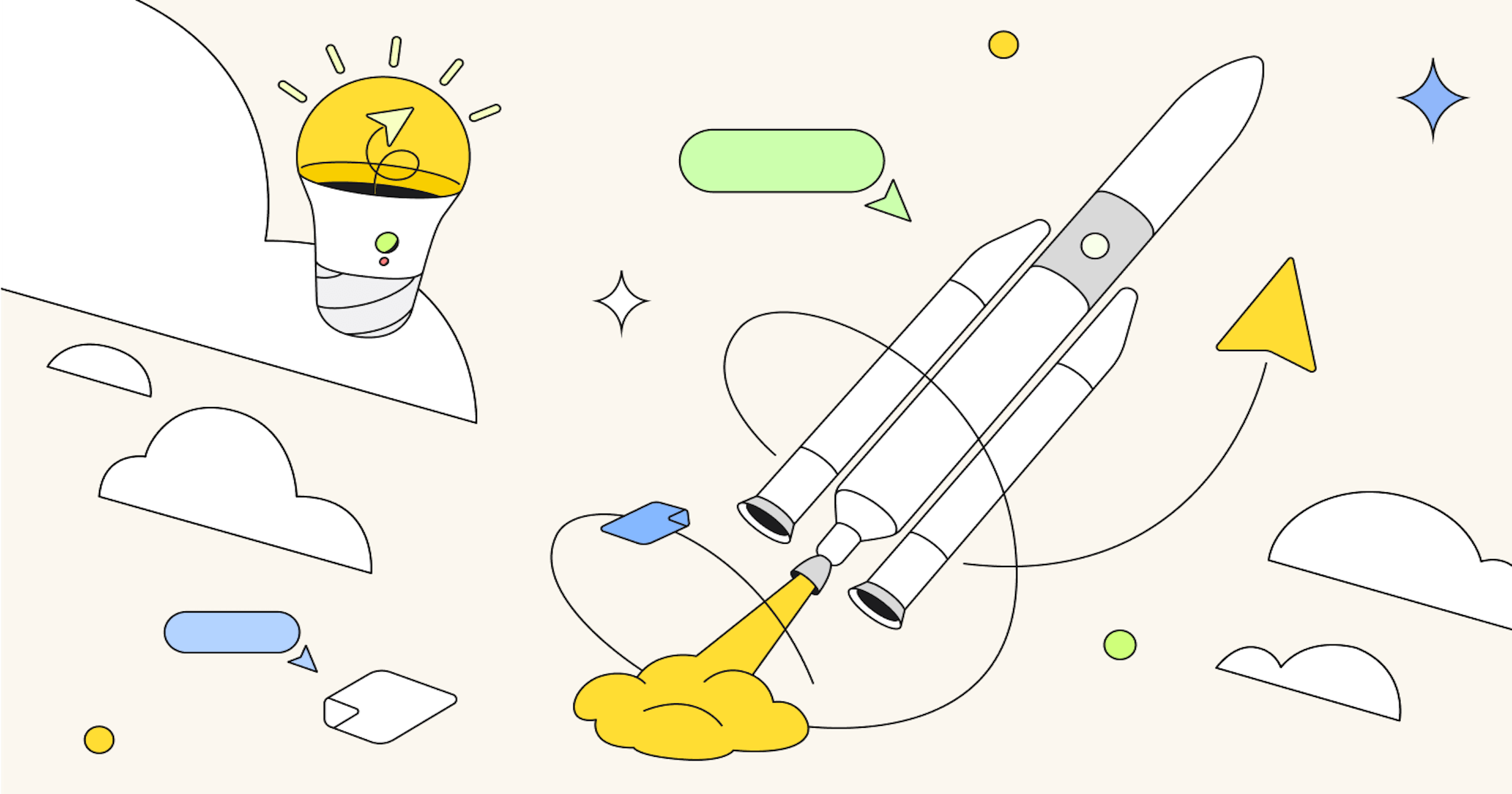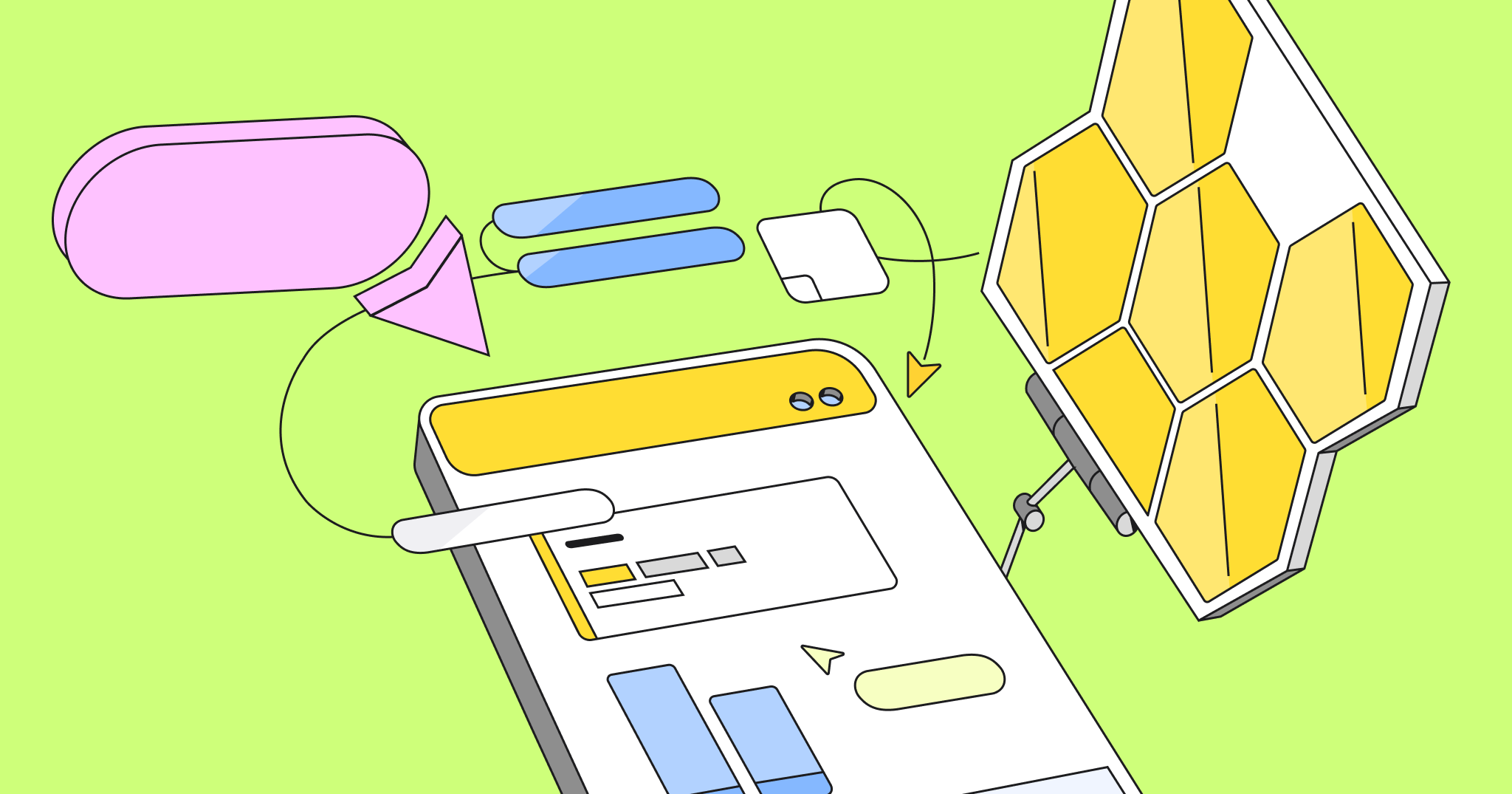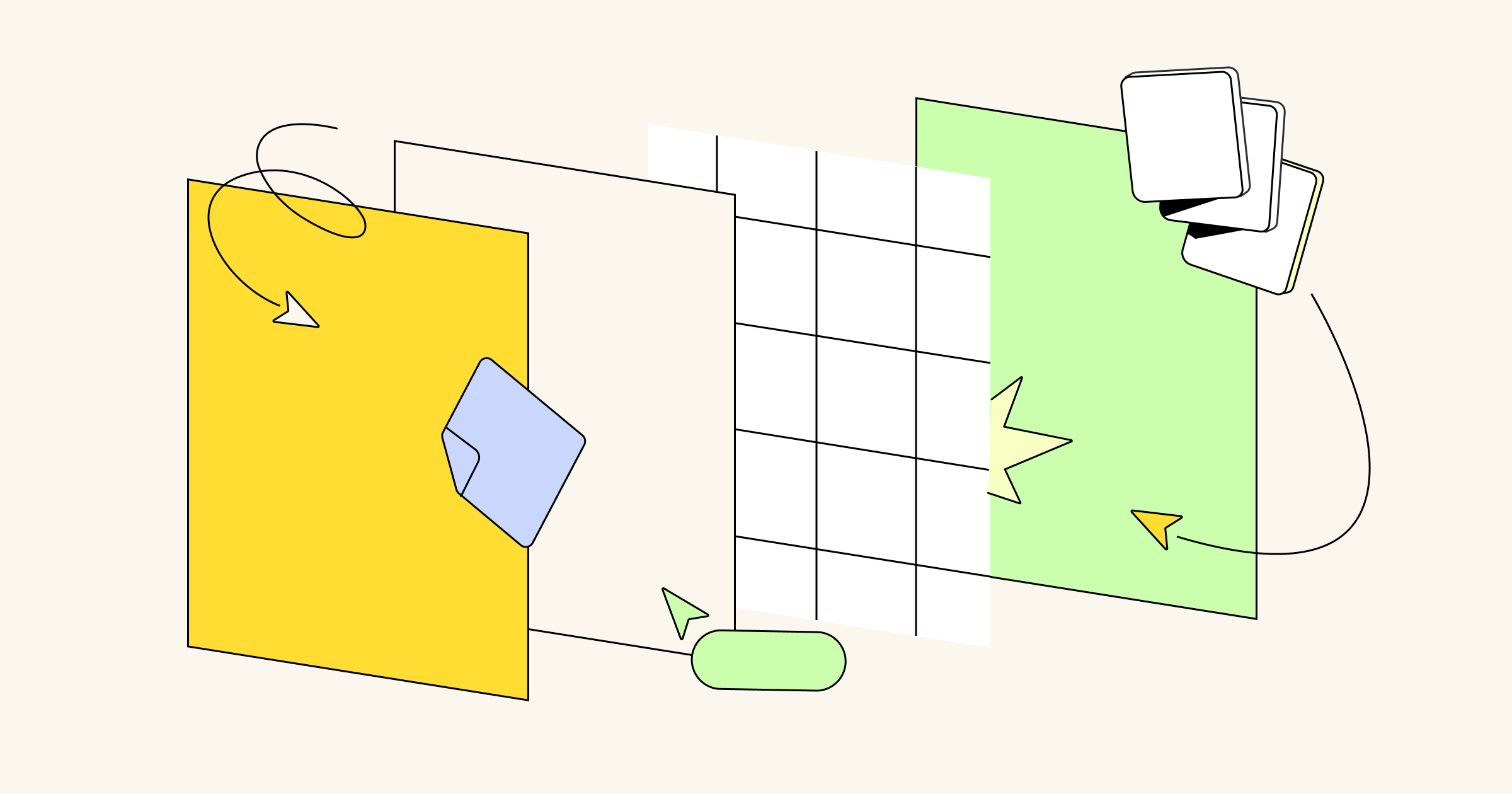Do you ever feel overwhelmed when you see a flashing cursor on a blank screen? Or you have so many ideas for a project that you don’t know where to begin? Or perhaps you simply can’t find the information needed to finish the task at hand?
A mental block — the feeling of being stuck and unable to move forward with a task or project — is a common part of work that nearly everyone experiences. Unfortunately, mental blocks can not only negatively impact employee wellbeing, but they can also cost companies millions of dollars in lost time.
At Miro, we wanted to better understand how mental blocks impact work, so we surveyed 2,000 full-time information workers based in the U.S. Our research uncovered new insights about the state of mental blocks, how it impacts wellbeing at work, and strategies to overcome that feeling of being stuck (and jumpstart productivity).
More than half of all workers experience mental blocks
Mental blocks are prevalent in knowledge work. Over half of all workers surveyed (59%) experience mental blocks on a daily or weekly basis — and for 1 in 6 workers this happens every day. In fact, only 4% say they’ve never experienced a mental block. Half of workers (50%) say they spend a few hours per week trying to overcome mental blocks, while 27% spend a few hours per day. The bottom line: Mental blocks are likely slowing down your employees’ productivity.
The most common types of mental blocks include:
- Information hunting: Being unable to find the information needed at the right moment (49%)
- Spiraling: Trying to go in too many directions and getting nowhere (45%)
- Blank screen: Being unable to start a project (30%).
Only 25% of workers report self-censorship (feeling unable to ask for help) and 26% say they’ve experienced tool overload (now knowing which tool to use). And for all the talk about analysis paralysis (inability to make decisions even with all the data), 73% say this has never happened to them.
Based on these common hurdles, it’s tempting to assume that starting a project is the hardest part — and, indeed, 35% say this is the stage where they typically experience a block. However, 40% report their blocks tend to occur in the middle stages of a project. Notably, nearly 1 in 5 (17%) say that mental blocks can happen to them at any time in the process.
These findings reinforce the fact that mental blocks are a part of life. But the economic, productivity, and emotional costs are real. Even just one hour of lost productivity per week costs an enterprise with 1,000 employees over $2.2 million annually — and our findings suggest the actual toll is much higher.
Mental blocks contribute to burnout
In addition to negatively impacting the bottom line, mental blocks also impact employee wellbeing by contributing to burnout and feelings of self-doubt. Mental blocks frequently make information workers feel frustrated (58%), anxious (48%), and annoyed (37%).
On a personal level, workers say mental blocks:
- Increase their level of burnout (65%)
- Make them doubt themselves (62%)
- Contribute to imposter syndrome (41%).
Unsurprisingly, these feelings can lead to job anxiety. The majority of information workers surveyed (79%) are concerned about mental blocks’ impact on their job performance and 44% say it makes them worry about their job security. Over half of workers (51%) are concerned about appearing lazy or slow, while 45% worry about causing delays.
Mental blocks don’t just sow seeds of self-doubt — they can also make workers doubt management or the project at hand. Forty-four percent of workers say mental blocks make them question the value of the project, while 31% wonder if they have the right manager. Interestingly, gender differences emerged here, with men being more likely than women to question the value of the project (50% versus 38%) and wonder if they have the right manager (37% versus 25%).
Work environment plays a role
Feeling unable to move forward with a task or project isn’t a new phenomenon, but the modern work environment seems to play a role in how mental blocks manifest for employees. Our findings indicate that hybrid workers tend to spend more time trying to overcome blocks, with over half of hybrid workers (57%) spending a few hours per week trying to overcome blocks (compared to 46% for remote and 45% for in-office) and a third of hybrid workers (33%) spending a few hours per day trying to overcome blocks (compared to 28% for remote and 20% for in-office).
In-person employees also seem to have an edge when it comes to mental blocks’ impact on wellbeing. Feelings of imposter syndrome drops to 34% for in-office workers, compared to 46% for hybrid and 45% for remote. The sense of belonging in the office likely offsets potential feelings of imposter syndrome for onsite workers.
Similarly, while over half of remote (54%) and hybrid (53%) information workers say their top concern is appearing lazy and slow, this concern drops to 47% for in-office workers. And only 28% of those in-office say their top worry is that stakeholders won’t want to work with them again, compared to 35% for hybrid and 33% for remote workers.
Our research also suggests a potential link between location and creativity. While 40% of hybrid and 35% of in-office information workers agree they are more likely to experience mental blocks on projects that require creativity, the number drops to 29% for remote.
Collaboration and communication are key
To cope with mental blocks, the majority of respondents (70%) say they take a break, while 49% choose to work through it. Overall, 65% of information workers agree they wish they had better ways to cope with mental blocks, suggesting that their current approaches fall short.
So how can information workers overcome mental blocks more effectively?
Our survey findings indicate that collaboration is an important skill to counter mental blocks. Feeling stuck is a far more common occurrence during solo projects — 63% of information workers experienced mental blocks while working on a solo project or task, compared to less than 40% during collaborative endeavors.
Clear communication and access to resources can also contribute to a smoother workflow. Like we mentioned above, information hunting is the most common type of mental block. And a majority of mental blocks occur when information workers feel in over their heads, like when they’re working on a project they don’t understand (73%), the project is outside of their training/experience (71%), or the project is outside the scope of work (70%).
Company leaders can help their employees work more seamlessly through their tasks by setting clear expectations, providing relevant training, and simplifying tools and information sources.
Tools like online visual workspaces that offer an infinite canvas and multiple integrations can mitigate the risk of mental blocks by fostering both collaboration and information sharing, whether you have a remote, hybrid, or in-person workforce.
Tl;dr: Here’s how to help information workers and your business get unstuck
Mental blocks are prevalent, but they don’t need to be permanent. Collaboration, clear communication, and innovative workspace tools can remove the barriers that obstruct productive workflow, leading to improved creativity and wellbeing for information workers and greater innovation and success for organizations.
Methodology: Miro surveyed 2,000 information workers in May 2023 to gain insights into their experiences with mental blocks. All respondents were employed full-time, located in the U.S., and ages 18+.




